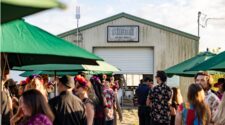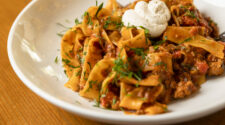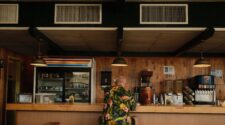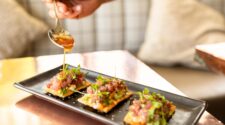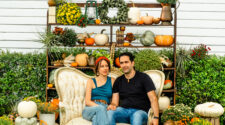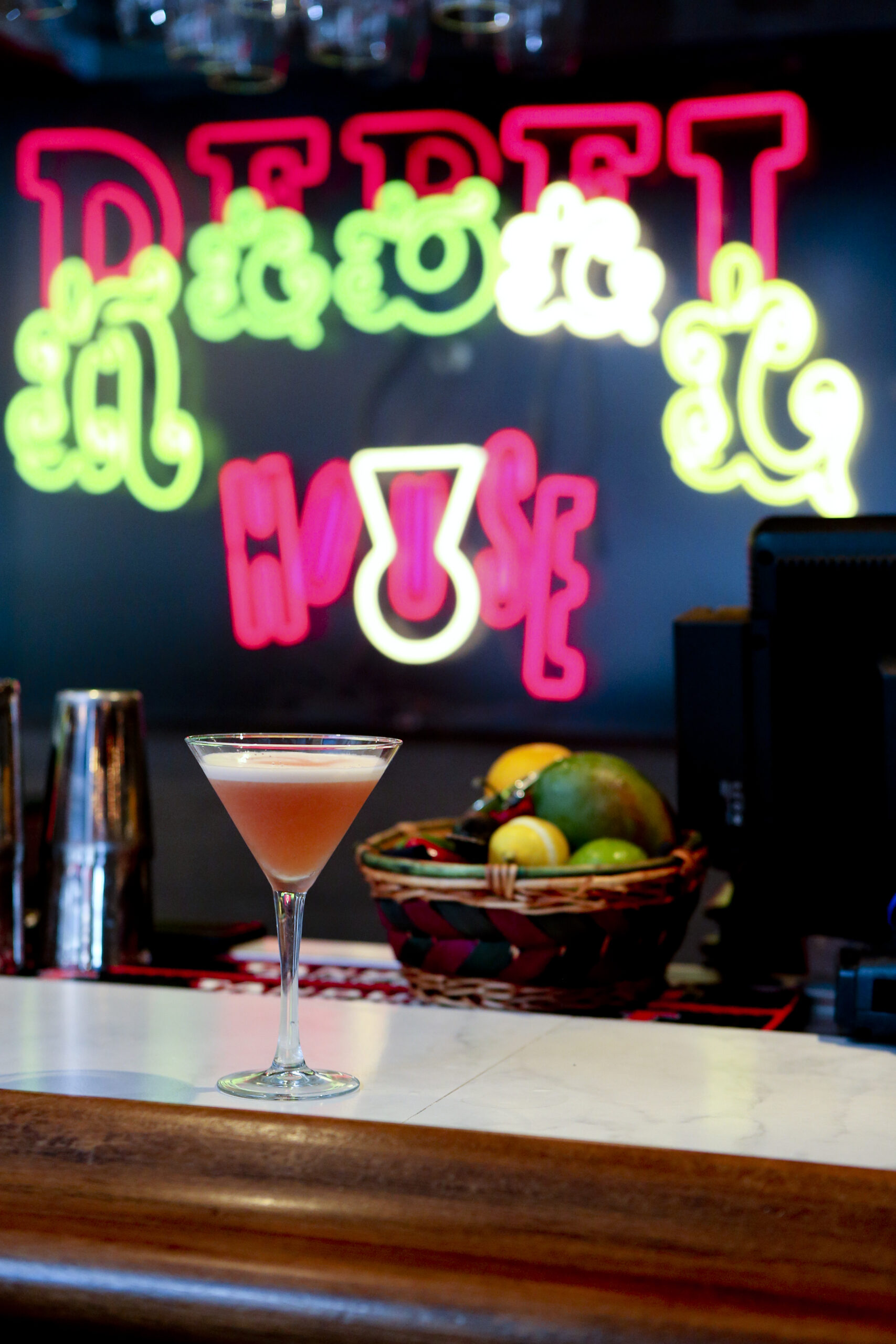Plating 101 at Driftwood
By Ava Bourbeau
Chef de cuisine Tommy Coombs will break out the tweezers every once in a while, but really all he needs is a loose wrist, a kitchen rag, and an unusually large spoon. Despite the general lack of ornamental instruments, the plates at Driftwood consistently tell a story. We sat down with Tommy to talk through his storytelling process and gain some insight on the art of plating. This is the Art Issue, after all.
Driftwood, while not a “tweezer kitchen,” has an intentional process when it comes to plating their dishes. The style may look organic, but the regiment is anything but laissez-faire. Notable factors that influence Tommy’s process are availability, flavor and efficiency.
AVAILABILITY
All dishes start with ingredients. At Driftwood, Tommy is constantly adding, changing and recreating menu items based on seasonal ingredient availability. The dedication to using in-season ingredients creates both a test in adaptability and a push in creativity. It’s also one of the principles that Driftwood is known for.
“We just figure out whatever [the farmers] can give us and we’ll figure out how to get that on the menu. We figure out how to present it the best,” Tommy said.
Some of the ingredients are grown behind the restaurant in outdoor garden boxes, while others are harvested from local purveyors. The lemongrass and sunflowers are currently flourishing in their on-site garden, but some ingredients require a little extra attention. The mushrooms, for instance, are faithfully tended to at Gratitude Garden Farm for weeks before making it onto plates at Driftwood. Even the beef is raised on Florida grass.
So, when conceptualizing a dish, Tommy considers what’s in his arsenal. “This is what’s local, this is what we can use, and we build around it. I think it’s actually pushed me to be more creative,” he said. A general principle of plating is that you typically want the focus to be on the star ingredient of a dish. Tommy does highlight the star, but not at the expense of the other ingredients, because each one is curated with intention.
For the Roasted Cabbage and Black-Eyed Pea Succotash — Driftwood’s vegan entrée — a roasted garlic tofu purée is splattered on the plate before a bed of succotash (made with local watermelon radishes, mushrooms, black-eyed peas, and more) is laid down. The mushrooms, chopped roughly, not diced, maintain their organic shape while the watermelon radishes add a vibrant hue.
Tommy compared piecing together this vignette to creating a landscape. “It’s going to look organic. Especially when it’s a veggie dish, I want it to look like the environment. I want it to look like a forest almost,” Tommy said. The cabbage, seared side up, functions as the centerpiece, like “a mountain above rivers of tofu.”
Most of the ingredients in this dish are available locally all year round. Their garnish, however, may alternate. This day, it was sunflower petals — which are in fact edible. Tommy liked the burnt red color on these ones.
FLAVOR
Second only to what chefs can physically get their hands on, is how a dish tastes. People may eat with their eyes, but we’re pretty sure it’s their taste buds that write Yelp reviews.
So, in the same way that he has to consider available ingredients before he can consider visuals, Tommy works on research and development of dishes based on flavors Driftwood wants to incorporate on the menu.
“I think about how I want the dish to be felt and tasted,” Tommy said. Yes, he even considers mouth feel.
Driftwood’s Steak Tartare, for example, is a unique take on a fairly common dish in fine dining. Rather than being limited to an amuse-bouche monolith of raw steak like you may be picturing, Tommy introduced beer-battered onions, reminiscent of a blooming onion, to house bites of steak. His plating of the dish plays on this idea of using the onions as vessels for the steak by putting a dollop of steak into each onion crisp. Another twist: Tommy grates manchego cheese, a soft Spanish cheese, over top of the onion and steak boats. His goal is to use “flavors that people are comfortable with but make it the best way they’ve ever had.”
The addition of the beer-battered onions is a mark to Tommy’s creativity, but also allows for a functional plating technique. He garnishes with nasturtium for a peppery finish and a mouth feel “like okra in a leaf.”
EFFICIENCY
Maybe the last thing a standard artist would consider, but a variable at the top of a chef’s mind: efficiency.
Back of house has a lot of moving parts, so that front of house can look effortless. Tommy — and other chefs — may wish they could spend longer than it takes a ticket to print on making a plate look pristine, but oftentimes a dinner rush supersedes that desire.
“Can I make it look as beautiful on a 200-cover Saturday night as I can on a 60-cover Wednesday night?” is what Tommy asks himself when deciding how a dish should be plated.
In addition to that initial consideration, Tommy has to take into account if his design can be replicated; by himself and by other chefs. Driftwood places heavy emphasis on its role in the industry as a place of education. Founder and Head Chef Jimmy Everett and Tommy train others as young as high school-age who have a passion for cooking; some who go off to culinary school after learning at Driftwood.
“Everybody does have some of their own little styles. I mean, we do want it to be as consistent as possible, but there has to be some kind of forgiveness. You design dishes based off of that,” Tommy said. “How good the dish is speaks to how well Jimmy and I were able to convey the messages and teach these kids.”
At Driftwood, the emphasis on seasonal, local ingredients is a core value, and plating plays a pivotal role in demonstrating this philosophy
by highlighting not just the main of a dish, but each individual ingredient to tell its story. Through his thoughtful approach,
Tommy reminds us that plating is more than just a final flourish — it’s an integral part of the dining experience, where every detail counts.
2005 S. Federal Highway, Boynton Beach
@eatdrinkatdriftwood




